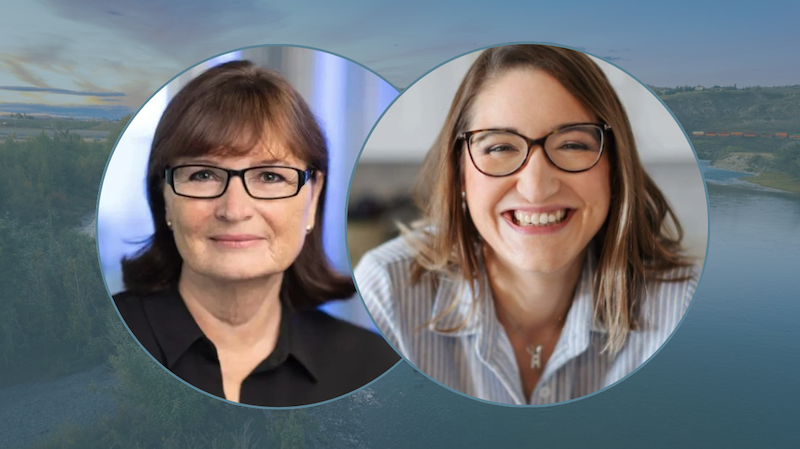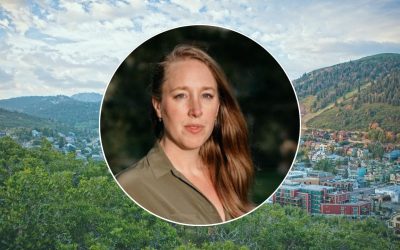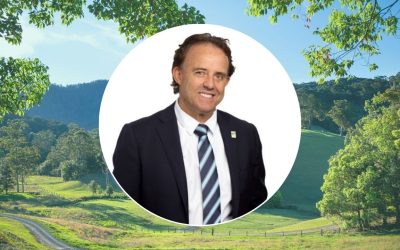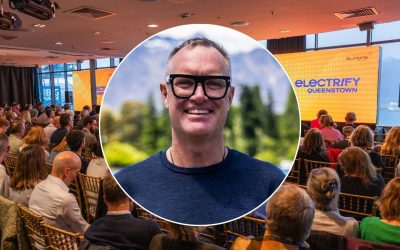“Every dollar that our government invests through us in sales and marketing puts $23 in the pockets of Canadians. And that is a great ROI story, and it’s a fast returns story for tourism.” – Marsha Walden, Destination Canada
What happens when one of Canada’s fastest-growing communities gets a chance to plan its tourism future before the rush begins? This episode explores how Cochrane, Alberta—situated strategically between Calgary and Banff—is taking a proactive approach to tourism development that prioritizes serving the community.
Callandra Caufield, Executive Director of Explore Cochrane, reveals how multiple factors are converging to create unprecedented opportunity: designation as a Travel Alberta tourism development zone, overflow visitors from Banff and Canmore, potential rail connections to Calgary International Airport, and international visitation up over 100% since 2019. Rather than waiting for tourism pressure to build, Cochrane is engaging stakeholders now to establish shared values and community-centred approaches.
“I’m extremely optimistic about what we can do in the tourism industry economically, culturally, maintaining that special feeling here in Cochrane.” – Callandra Caufield, Explore Cochrane
Marsha Walden, President and CEO of Destination Canada, contextualizes this within Canada’s broader tourism potential, describing the sector as offering “high growth, fast returns” while contributing $130 billion annually across 5,000 communities. She introduces Destination Canada’s Wealth and Wellbeing Index, which measures tourism success through six holistic components including community engagement, environmental stewardship, and cultural celebration—moving beyond traditional revenue metrics.
The conversation reveals how Cochrane aims to maintain its authentic small-town character (they remain a “town on purpose”) while capturing economic benefits through regional collaboration along the Cowboy Trail and thoughtful infrastructure planning. Both guests emphasize that sustainable tourism growth requires thinking like residents first: building assets that serve locals naturally creates appealing visitor experiences.
This episode, you’ll also learn:
- How Cochrane is planning for tourism growth before it becomes overwhelming, creating a model for other emerging destinations.
- Why Destination Canada’s new Wealth and Wellbeing Index measures community thriving alongside tourism revenue across six key components.
- Why Cochrane chooses to remain a “town on purpose” despite qualifying for city status—and how tourism can protect this character.
- What Canada’s tourism sector offers as an economic superpower with high growth potential and fast returns.
Subscribe to Travel Beyond through Apple Podcasts, Spotify, or your favourite podcast player.
Show notes
Calgary-Banff Rail Project Updates – Follow the proposed passenger rail service connecting Calgary International Airport to Banff National Park, including stops in Cochrane and impacts on regional tourism.
Canadian Tourism Data Collective – Access comprehensive Canadian tourism research, trends, and data, including the annual Wealth & Wellbeing Index reports and provincial tourism insights.
Tourism’s Wealth & Wellbeing Index – Destination Canada’s measurement tool that assesses tourism’s comprehensive benefits across economy, employment, enablement, environment, engagement, and experiences.
Travel Alberta Tourism Development Zones – Learn about the 10 regional zones identified for tourism growth potential, including Cochrane’s designation and development strategies.
Feature image provided by Explore Cochrane and Destination Canada.
Episode transcript
Marsha Walden: Every dollar that our government invests through us in sales and marketing puts $23 in the pockets of Canadians. That is a great ROI story, and it’s a fast-returns story for tourism.
Callandra Caufield: I’m extremely optimistic about what we can do in the tourism industry, economically, culturally, maintaining that special feeling here in Cochrane. I’m really optimistic.
David Archer: Hello. I’d like to welcome all of our listeners or viewers, wherever you might be. You might be listening to this on the Travel Beyond Podcast produced by Destination Think, or maybe you’re seeing the video version at our digital event on World Tourism Day. But either way, I’m David Archer, editorial manager at Destination Think, speaking to you from Haida Gwaii, the territory of the Haida Nation off the north coast of British Columbia in Canada.
For some time now, we’ve been interviewing the leaders of various destinations and especially those that are part of the Destination Think Collective, and that continues today. But this interview is a little bit special, because we’ve got two guests today who are very knowledgeable about the value that travel can provide to communities and the nation of Canada as a whole.
They have some ideas about how that can happen. We’re going to have a discussion about how places can plan for success when considering tourism growth, especially in their early stages, and talk about what that success might look like, how it can benefit communities to make sure that tourism’s working for everybody.
What opportunities are ahead? No doubt with a few things that international destinations will be able to learn from as well. Here to tell us all about that are our guests today. Callandra Caufield is the Executive Director at Explore Cochrane, which is a fast-growing town near the Rockies in Alberta, Canada, and Marsha Walden is President and CEO at Destination Canada, which is a federal agency that supports tourism’s success across the country.
Thank you and merci to you both for being here. Marsha, I’ll start with you. One of the reasons that we organized this conversation is that you recently published an article on LinkedIn called Canada’s Surprising Economic Superpower. In it you were making the argument that tourism is incredibly impactful to the Canadian economy and that our openness as a nation is one of the things that sets us apart.
What opportunities are you seeing for Canada when it comes to tourism?
Marsha Walden: I think I can probably sum it up in four words, and that is high growth, fast returns. When we look around the world right now, what we’re seeing with all of the disruptive activity, I would say around the future of economies, not just in Canada, but all over the world. I think everyone’s having to have a look at the relationships that they have, the economic ones, the trade ties, and I think tourism fits into the narrative of future growth opportunity really well. For a couple of reasons. First of all, for Canada, it is one of our largest industries.
Very few people understand that. Mostly because you don’t find it concentrated in any particular area, like you may find mining or automotive manufacturing. We really find tourism in 5,000 communities right across the country, and it’s all of those localized activities that add up to $130 billion a year in revenue.
But the great thing about tourism is it’s going to outpace the global economy for the next five years, for certain, and probably for the next decade. Hitching our wagon to a sector that has that kind of growth potential and which has returns almost immediately. If you invest a dollar in marketing, you’re probably going to see a return the following year or the year after.
It’s not like other nation-building activities that may take close to a decade to come to fruition. We really have an important role to play in Canada’s economic future.
David Archer: You mentioned that tourism is often underestimated as an economic force. What should all Canadians know about the value that tourism brings to communities, economic and otherwise?
Marsha Walden: Well, I think we’re a unique industry in that we certainly have enormous economic power. As I said, it’s dispersed right across the country, but we also bring incredible cultural or sociocultural advantages and benefits to communities as well. It allows Canadian culture to really be celebrated, to be shared with the world, for our values as Canadians to be talked about.
It serves as a calling card to invite others around the world to come and study here, live here, grow businesses here, and ultimately become Canadian themselves if they wish. We really see ourselves both as an economic engine and as a sociocultural force that helps communities build assets that are good for residents as well as tourists. The local art gallery is enjoyed by both and really requires both. The fact that you need access from airlines in order to traverse our huge country—all of those things only really work when you throw in the tourism component with the resident component.
It’s a very symbiotic relationship between visitors and residents, and very few people, I think, appreciate those non-economic aspects of what tourism brings to their community.
David Archer: Yes, and it touches many aspects of our society. One other thing you mentioned in the article was addressing both the demand and supply sides of the equation—not only promoting, but also thinking about what can we supply to everyone. What’s some of the critical infrastructure that will be needed? We’re seeing a lot of destinations grappling with that right now, as we’ve tackled in some recent stories too. Let’s turn it over to Callandra.
It seems like Cochrane, Alberta is in a pretty fascinating moment right now, and for many reasons, in part due to its location near some very heavily visited places like Banff National Park. You’ve been on the Travel Beyond podcast before, speaking about your organization’s community-centred approach to tourism.
I’d encourage anyone interested in community planning and tourism to go and search out that episode in our feed. But all that said, Callandra, can you describe why this is an important moment in shaping the future of tourism in Cochrane?
Callandra Caufield: You’ve hinted at a few of those important pieces, and there are enough things going on that I had to write a list beside me to make sure I touched on all of them.
First, in 2021, 2022, our provincial tourism organization, Travel Alberta, looked at some of the regions outside of our most popular tourism destinations and identified 10 tourism development zones. Cochrane is part of one of those tourism development zones. Travel Alberta spent some time looking at the opportunity in this region—it’s Cochrane, Sundre, and a space called the Envy of Bighorn, which I think probably almost no one has heard about.
It’s a big, very wild, very natural space to the west of us. That’s one of the factors. The other factor you already indicated: we’re 35 minutes from the mountains. We’re in between Calgary and Banff. We’re 35 minutes from a major international airport. We’re already starting to see overflow from Canmore and Banff, whether it be visitors that just can’t find accommodation in those destinations, or perhaps they’re looking for something that costs a little bit less money.
We’re seeing those visitors in Cochrane. But we’re not necessarily keeping them here. They’re spending the night, which is wonderful for our accommodation sector, but we want them to stay a little bit longer. Then another factor is there is a large conversation right now about a rail route moving from Calgary International Airport downtown Calgary through Cochrane beneath Mînî Thnî, which is our Indigenous reserve next to us, and then into Canmore and Banff. If that train is successful, we will see visitor growth. Absolutely. The other piece is since 2019, our international visitation, according to our Destination Canada data dashboard, has gone up over a hundred per cent. It really is a time right now where we are not a busy tourism destination. We are an emerging destination with lots of opportunities, but I wouldn’t say we’ll be emerging forever.
David Archer: Given all of these factors kind of pressing down on Cochrane right now, what are some of the possible paths that lie ahead for the tourism industry?
Callandra Caufield: Yes, One of the things that I forgot to mention is that we are one of the fastest-growing communities in Canada. We are the fastest-growing community in Alberta. Right now a lot of our residents and our leaders and decision makers are really focused on managing community growth, whether it be water licences, whether it be planning and development. Tourism isn’t necessarily top of mind right now. It’s not an urgent topic, I would say.
In my opinion, it’s critical that we do some proactive planning, that we identify who we are as a tourism ecosystem and that all of those interest holders sit down together and have a discussion about our values and have a discussion about what we’d like to see before the ball is rolling quickly that we don’t have the time to necessarily pause and discuss these things. I mean, two of the opportunities that I see in the region—one is that that interest holder group coming together and us measuring resident sentiment, understanding what our residents want, understanding what our landscapes need. Then the other opportunity I see is regional development.
To the west of us, as I shared, we have the most raw, natural, wild beauty. But it is very wild and there’s some land use planning that needs to happen, but it certainly is a special place for the right kind of visitor. Then to the north and south, that area has been called the Cowboy Trail for decades.
We have communities to the north and south of us that share that similar idea of wanting to have community-centred tourism, tourism that ensures safer ecosystems and also shares some of that ranching cowboy history as well as the Indigenous history that came before that. There’s some alignment in values and what we offer up and down that Cowboy Trail. I see that as a pathway as well.
David Archer: Marsha, based on everything that you’ve seen across Canada in your career and in your role at Destination Canada, do you have any thoughts about how Cochrane can plan for growth in the right way or in a positive direction? It seems like there might be a case study in waiting for some exciting things.
Marsha Walden: Yes, well, I think everything we just heard from Callandra is certainly heading definitely in the right direction. It is a great opportunity in my mind as a community is experiencing high growth to be thinking about the economic and sociocultural benefits that could accrue during that build.
Considering the tourism factor as we build out communities for residents, because a great place to live is often a very great place to visit. Those things can be planned in harmony. I think we all want to be sure that communities embrace the industries that come to them eventually, and tourism has a great opportunity to do that.
But that means thinking beyond what are the initial areas of the city that would be attractive? What happens when we have seasonal surges? How do we make plans for dispersing our visitors a little more evenly around the community it doesn’t in any way sort of intervene with daily life of residents and come to be resented for that.
There are a lot of ways that proactive thinking about how tourism may show up in your community can really make it a great benefit for everyone. I think it’s also an aspect of when you have children and you want your children to be able to find work and to grow and live in the community that they grew up in.
Tourism has a great history of taking people everywhere from their first job all the way to that high-level CEO-executive director-type position in a hotel or in a destination marketing organization. There’s huge opportunity that comes with that for the ability of families to keep their family close by as they mature.
That’s another terrific benefit, I think, of very localized tourism. Thinking through the synergies, I think, is a great approach.
David Archer: Marsha, what are some of the particular challenges you think Cochrane might need to prepare for, especially as a place bordering such a significant tourism destination?
Marsha Walden: Yes, well, I think Callandra hit on one of them, and that is how do we become more than just an accommodation overflow? How do we utilize the accommodation assets we have, but really try to deepen the relationship and the experience that visitors get when they come to Cochrane? That really means just having things to see and do, and places to eat, and ensuring that your community understands the economic impact and benefits of that. If you stay for lunch, you’re probably also going to visit the local shop. If you visit the local shop, you might also stay for a cocktail at five o’clock. These things I often characterize tourism as—it’s like a relay race. You’re passing a baton, which is the traveller, from one business to the next, and you hope that everyone does their leg of the relay in the best way possible to just make it a fantastic end-to-end experience for a visitor. Then, social media and the word of mouth of friends and family really starts to take off and build an industry. I think Cochrane has a lot of the fundamentals to make that possible for them.
David Archer: Callandra, I invite you to respond to that. But I was also wondering if you can describe the local culture a little bit and tell us kind of what’s at stake in Cochrane. What are people thinking about when it comes to how tourism will affect the future?
Callandra Caufield: I think one thing that our community—I hear a very unified voice from our community. We recently did a municipal development plan that goes all the way until 2050. One thing that almost everyone I speak to agrees on is that when you come to Cochrane, you come over this big hill, you can see the Rockies in the distance, and there’s just a feeling in this community that people really like.
That’s why many people are moving here. It’s hard to identify what that feeling is. I would say it is the culture of our community. We’re still—we are not a city actually, even though we could be—we’re a town and we’re a town on purpose because it’s got that small town feeling. Our community is unified in wanting to find a way to maintain that.
Marsha spoke at the beginning about how tourism can do exactly that, where we can celebrate our culture. I think one thing our residents are going to agree on is that we want the community. We want more services and more fun things to do, but we don’t want it to stop feeling like a place where my kids joke—they call me, oh hi mom—because you walk down the street and you say, oh hi, oh hi, oh hi, because you know everybody in town. I think we recently had a group of French visitors here. I was showing them a public art piece, and a mom and her kids stopped and said, are you visiting from France? Hi, welcome. It’s great to have you.
She spoke a few words of French and thanks for coming. I think that is what we want to maintain. That’s what our community feels really proud about, and we are grasping that pretty tight right now. I’d like to see our organization use tourism as a lever to protect that feeling, whatever it is.
David Archer: Yes, those moments are wonderful when you see them happen out in the wild in the tourism industry. Speaking of using tourism as a lever to sort of maintain the culture that’s important, do either of you have any ideas about how that can happen or what residents need to know about tourism to help them think in that direction?
Marsha Walden: Well, one of the things I find communities do very naturally, and it’s generally thought about primarily for residents, but is an incredible tool for attracting visitors too, is events and festivals. Almost every community has their own way of celebrating something about their community or the cultural makeup of their community or the food of the community.
Whether it’s something as huge as Calgary Stampede and Western culture that’s really about Alberta culture—it’s become world famous as you well know—many places in Canada have ways of bringing to the forefront either food or music or the arts. As we see in different parts of Ontario, for instance, there is something that everybody can gather around and that can be turned into an initial foray into tourism to really get people to come. You just put on the dog, as they say, and make it super special for everyone.
Callandra Caufield: I would say that’s definitely a strategy that we’re starting to implement. We have an event called Discovery Days, and it’s an extension of our rodeo—different than Stampede. It’s a small town rodeo, and we have 11 different not-for-profits that participate in that, and they’re all able to engage in their mission. I agree with you, Marsha. We’re seeing some excitement about the community getting together. I also think when both of you get a chance to visit Cochrane, if you come in the winter, you’ll notice that it feels a little bit like a Hallmark movie. You might see some of that from our Christmas as well.
Marsha Walden: Yes, well, I’ve seen communities like Victoria, for instance—I was twigged when you said Hallmark, because really it’s all about love always, isn’t it? Victoria started a couple of years ago just having a celebration of love during Valentine’s Day week and Valentine’s Day weekend.
They just put pink lights all throughout the city and made the hotels come to the party with special Valentine’s Day packages. There are many opportunities for inviting visitors to enjoy a special experience, whether you’re a pretty big city like Victoria or a small town that already feels like a Hallmark movie. There are great ways to enliven it. To me it speaks to why we, as an industry and as Destination Canada, felt that there’s a need for a new measurement tool that assesses the impact of tourism in Canada. For years we’ve talked about revenue or room nights or the number of visitors and all of those quantitative elements are certainly important to assess the economic aspect, but we created something called the Wealth and Well-being Index because we wanted to be sure that not only was tourism thriving, but the communities that tourism does business in are also thriving. It really looks at six different elements.
It’s the economy of course, and employment, but also the enablement factor—how does tourism support the infrastructure like an airport or like transit that the community also benefits from? How are we looking at the environment that we operate in? We don’t want to be an extractive industry. We want to be restorative, we want to have a sustainable way of operating, and that’s good for community. We want to look at engagement. How are we celebrating the cultures, the local cultures that have been built in communities? How are tourists able to engage with that culture in a positive way? Then finally, of course, what’s the visitor experience? Is it a great experience for them as well as the community? Because ultimately that’s what brings people back. It was really about putting a new yardstick in place that allows us to look at a more holistic view of tourism’s contributions to Canada and to individual communities. We’ve assessed this for the provinces and territories in Canada to look at which provinces are really strong in some elements of the index, and every province has its own strengths and they can learn from each other. It’s fairly new. We only launched it last year, but it’s garnering a lot of attention from UN Tourism, from the OECD. I hope to bring it to the WTTC later this year. Canada, I hope, can be a leader in that front.
David Archer: Yes, we’ll have a link to that in the show notes later. Callandra, how does that strike you as someone committed to community-first tourism? I’m sure that resonates.
Callandra Caufield: I think I was maybe inappropriately excited about the release of that WellBeing Index. It was on our board meeting agenda the month that it came out. That was on my list—it’s pretty critical that our metrics are more holistic. I think that is part of sustainable or community-centred tourism. While at a small town level, we’re not going to be able to—the Wealth and WellBeing Index is very extensive and appropriate at federal provincial level. We’re certainly going to be using that framework and some of the ideas from that framework to look at how on a small level, how can we measure some of those components? Things like resident sentiment is a realistic measurement for us. Are there cultural measurements that we can realistically put in place, whether it just be a question on a visitor intercept survey? We’re definitely leaning into that and excited that Destination Canada is leading in that way, not only saying that sustainable regenerative tourism is important, but here’s how, here are the tools that we’re going to use to make sure that it’s actually happening.
David Archer: Yes, it’s important to see where we can measure those things and it’s been exciting for me to watch that happen across destination management as well. I wanted to ask Marsha if you see any particular international visitor opportunities for smaller rural destinations like Cochrane or others across the country?
Marsha Walden: Yes, I think if we kind of look at what the sentiments of travellers are today, there’s more and more interest in finding the off the beaten track, the less trampled, more unique stories that people want to be able to go home and share where they got a true taste of life in Canada, of what Canadians are all about. That’s a global trend. The international travellers that we focus on are the ones that are really looking to go deeper.
Everyone is welcome in Canada, but if we have to spend our money attracting a certain segment, then we want the ones that really help to enrich themselves and enrich Canada, both culturally and economically when they visit. Part of that is making sure that they engage with Canadians and Canadian communities in a really respectful and deeper way, and they’ll go home richer for it.
For us, I think that’s an enormous opportunity for Canada. We are lucky to have many very different types of communities across our country. When you’re this big, every region has its own flavours, and there really is a lot to choose from for visitors and reasons to come back and enjoy different ones. I think the more that we can celebrate that, the more we’re leaning into a big global trend on how people like to travel today.
David Archer: Are there any other smaller communities in Canada that you would point to as a positive case study for this sort of conscious community-centred tourism development that we’ve been talking about?
Marsha Walden: Yes, well, there are quite a few, as you might imagine. One is a smallish town called St. Jacobs in Ontario, and we actually have a case study on our website if your listeners are interested. St. Jacobs has about 2,000 residents and welcomes over a million visitors annually. What makes it remarkable though, isn’t really just big numbers like that. It’s about how the community is reclaiming tourism, I’d say, on its own terms. It had a history of Mennonite culture that created a very distinctive flavour for the community. Over time, the community immigrated to other places and they really have done a great job of trying to reinvent a place, not in an artificial way, but in a really authentic way to retain the things that have always made that community special and to be able to share that with visitors because that’s what they really appreciate about St. Jacobs. That very much is, I’d say, a beacon of place-led innovation and development and one that is a good one to watch.
The other one that’s been interesting to watch is in Alberta as well, and it’s Métis Crossing. The Indigenous culture of that place is really celebrated and is being developed, and visitors are being invited to participate in it in a very small scale as they learn and how to grow in a way that is still appealing to the local residents.
On a bigger scale, another great example from Alberta is the strategy that Banff and Lake Louise have used to develop their own growth plan, because that involved a very extensive consultation with their stakeholder groups at every level. Residents, tourism operators, government, Indigenous governments as well. There are lots of good examples across Canada and several very good ones in Alberta.
David Archer: Absolutely. We have spoken with Christie Pashby, the director of communications over in Banff, and she had plenty to say about all of that. It’s been great to watch. As we wrap up today, do either of you have any last observations you’d like to share with the travel industry?
Marsha Walden: Well, I think if I could, I’d kind of like to come back to that core message about what do Canadians and policymakers really need to know about tourism? When we think about the contribution that we can make in terms of economic and sociocultural strength to an evolving economy in Canada, that’s a really important message for all of our tourism sector to take to their local policymakers and economic development people. We have lots of information on the return on investment that tourism brings to Canada, but also that organizations like Callandra’s and mine bring to the party.
We know, for instance, that every dollar that our government invests through us in sales and marketing puts $23 in the pockets of Canadians. That is a great ROI story, and it’s a fast-returns story for tourism. I really hope that our industry will come together to really be part of Canada’s future economic narrative and continue to be that part of our sociocultural narrative. That would be my closing remarks.
David Archer: Terrific. Callandra, any last words from Cochrane?
Callandra Caufield: I just think I want to echo a lot of what Marsha has said and just encourage people, maybe people who aren’t involved in the tourism industry to understand tourism as a whole ecosystem. I think sometimes people just think of it as only hotels, or they really don’t understand how many people are involved in tourism—the kids, like you shared. We’ve got our kids who can stay home and work in the industry, but there are significant opportunities to advance in your career. There are many people who can have lifestyle businesses in the tourism industry and live in a way that feels good for them.
I also think there are businesses that people don’t even realize are part of the tourism industry, like retail and like restaurants. Some of those businesses require both tourism and resident support to survive. I encourage people to look at it as a whole, and I think I’m extremely optimistic about what we can do in the tourism industry, economically, culturally, maintaining that special feeling here in Cochrane. I’m really optimistic.
David Archer: Thank you both very much for joining me today and for the lively conversation.
Marsha Walden: It was a pleasure. Thank you.
Peter McCully: This has been Travel Beyond presented by Destination Think. Our thanks to Callandra Caufield from Explore Cochrane and Marsha Walden from Destination Canada. To learn more about Cochrane’s community-centred tourism approach, you can visit explorecochrane.com. To discover the Wealth and WellBeing Index, visit tourismdatacollective.ca.
For more resources and show notes, visit our website at destinationthink.com. This episode was co-hosted and co-produced by myself, Peter McCully. David Archer hosted the interview and composed the theme music. Sara Raymond de Booy is co-producer. Lindsay Payne, Amy Bjarnason and Cory Price provided production support.
If you like what you hear, please take a moment to give us a five-star rating. It helps more people find our show. Thanks for listening, and we’ll be back with more next week.










0 Comments